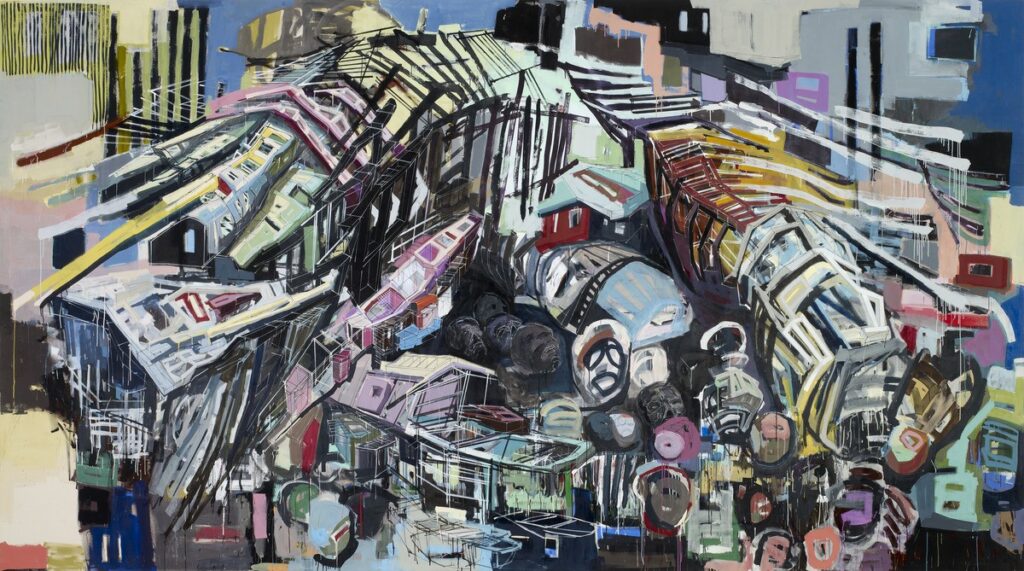We spoke to AGO Assistant Conservator, Paintings, Christina McLean about re-stretching some of the massive works in Denyse Thomasos: just beyond – on view now at the AGO.

Denyse Thomasos. Arc, 2009. Acrylic on canvas, overall: 335.3 × 609.6 cm. Art Gallery of Ontario. Purchase, with funds from the Women’s Art Initiative, 2022. © The Estate of Denyse Thomasos and Olga Korper Gallery, Photo: Michael Cullen. 2021/356
For the last three weeks, visitors have been experiencing the magnificence of Denyse Thomasos: just beyond at the AGO. This landmark exhibition explores the full scope of Thomasos’s career, featuring more than 70 paintings and works on paper by the late Trinidadian-Canadian contemporary artist.
just beyond is co-curated by Renée van der Avoird, Assistant Curator, Canadian Art, AGO; Sally Frater, Curator of Contemporary Art, Art Gallery of Guelph; and Michelle Jacques, Head of Exhibitions and Collections / Chief Curator, Remai Modern, but the list of AGO staff members who contributed to the exhibition is much longer.
Critical to the logistical success of just beyond is the AGO’s Conservation Department. Numerous paintings in the exhibition were transported to the AGO rolled up, due to their massive scale. They needed to be carefully re-stretched and mounted before they were hung in the space. This intricate and time-consuming task requires teams of conservation staff to assess the condition of the works, and often make small repairs to them before beginning the complicated stretching procedure.
We spoke with Christina McLean, AGO Assistant Conservator, Paintings, who led re-stretching efforts for the exhibition. She enlightened us on the details of preparing massive, rolled-up paintings for installation.
AGOinsider: Some of the Denyse Thomasos works are massive. What goes into stretching and mounting works of that size? Can you share some of the details?
McLean: Many of the large canvases in this exhibition are of a scale where they are transported and stored rolled, with their strainers fully disassembled. We assemble the strainers and make sure they are structurally sound enough to support the large canvases. The paintings have previously been stretched many times and we first ensure that they are strong enough to be stretched once again. Often this necessitates repairing tears in the tacking edges or reinforcing the edges with strip linings. Sometimes when a painting that is supposed to be under tension spends time unstretched it relaxes and creates deformations. Prior to stretching we address these deformations locally with controlled treatments. Finally, we stretch the paintings in teams to achieve even and consistent tension.
Read more in this week’s AGOinsider.